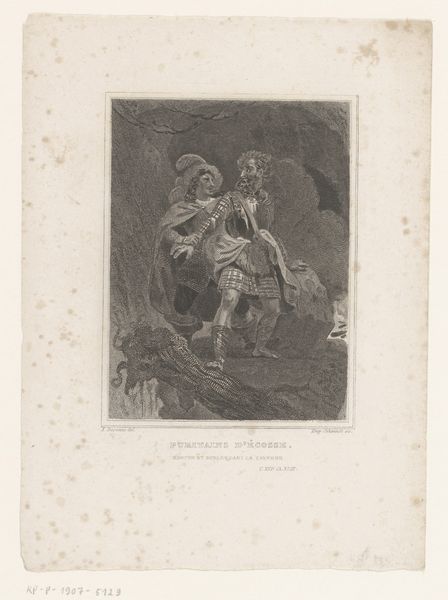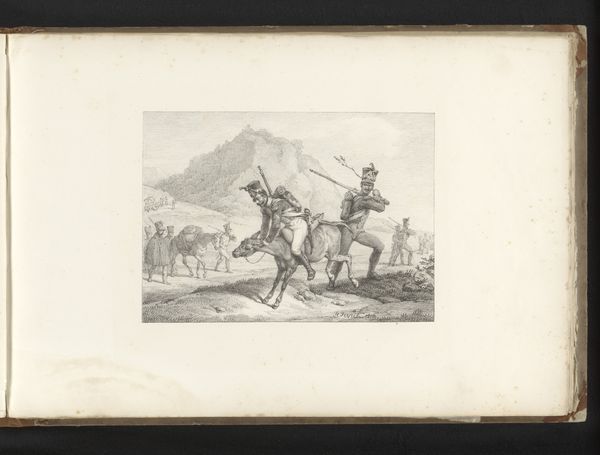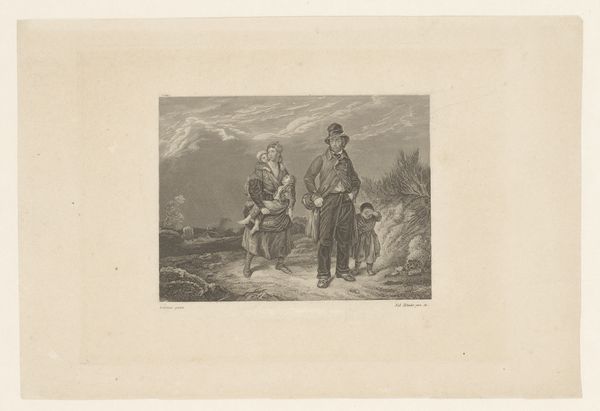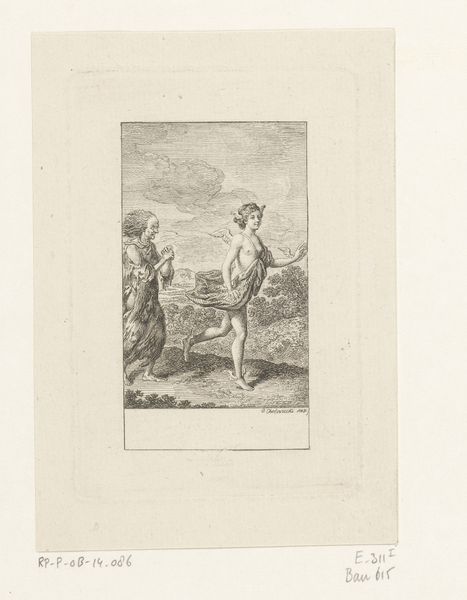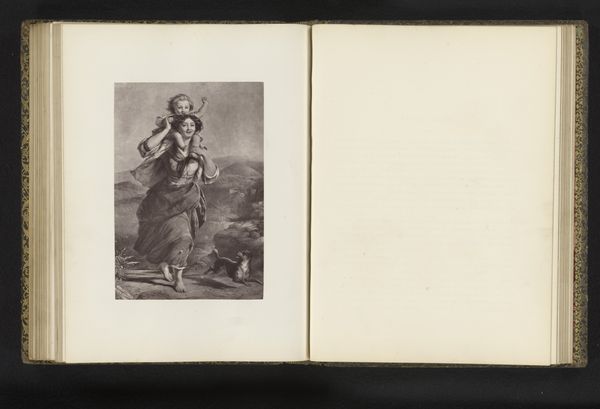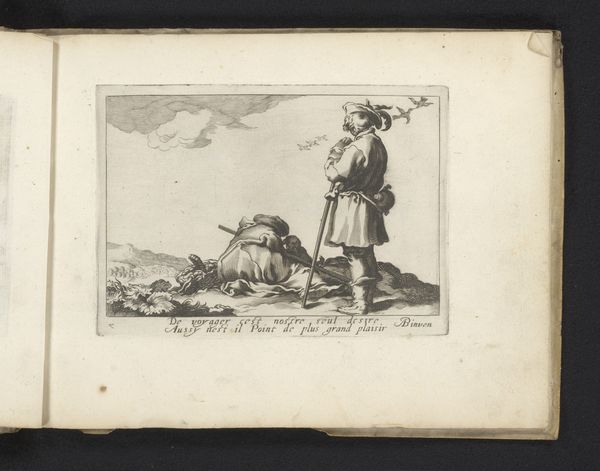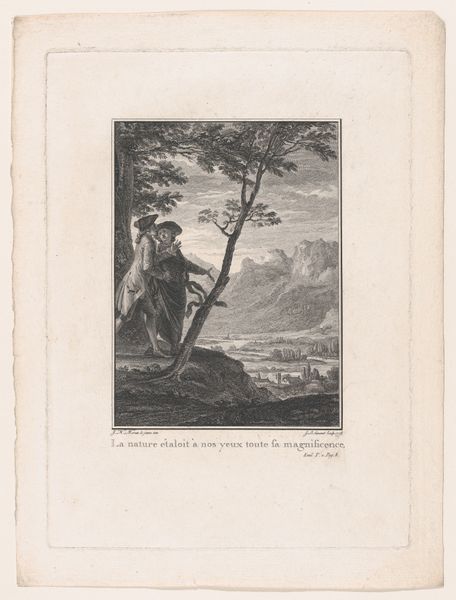
Dimensions: height 174 mm, width 136 mm
Copyright: Rijks Museum: Open Domain
Curator: Here we have a lithographic print, probably dating from the 1870s or 80s. Its title translates from the German as something like "A Couple in Love on a Rock". What is your immediate reaction? Editor: There's a powerful romantic quality. The dramatic landscape, the way they cling to each other – it evokes a sense of longing and destiny. I'm also struck by their clothes: theatrical but seemingly from another place and time. Curator: Absolutely, the anonymous artist captures a yearning gaze into each other and the unknown. I’d situate this piece within the context of late 19th-century social constraints and emerging Romantic Nationalism. Note the way their attire is less of the current moment and speaks to the broader history of folkloric costume. Editor: Folkloric indeed. His cap seems straight out of some historical drama, while the flowers in her hair harken back to ancient fertility rites. Their dress signals this isn't just any couple – it's love intertwined with the symbols of identity and the collective unconscious. Curator: Exactly! It speaks to how even intimate relationships become sites for the performance of cultural narratives. The positioning atop the rock gives their connection a monumentality that's worth considering, especially thinking about national myth-making during this era. What societal pressures might have driven the yearning that they exhibit here so publicly, or at least to an artist? Editor: It also speaks to an idealized, perhaps even unattainable, vision of love. Their elevated position above the landscape suggests a transcendence of everyday reality, a sanctuary found only in each other. It reminds me how throughout the ages, humankind always looks for an idyllic escape hatch through a powerful union, away from the pressures of day to day living. Curator: Certainly, but remember those escapes often had costs associated with them. While the artist is interested in romance, how might class, gender, and national belonging frame such images during a period of massive socio-economic upheaval and emergent nationalist fervor? It is essential that we question who could even dream about "escape" through idealized love in the first place! Editor: A very astute point. Looking at it again, I see how that dramatic sky is really bearing down on them. There is, perhaps, a subliminal omen hidden here too; a quiet visual tension adding a darker dimension to the "liebestruck". Curator: Indeed! Considering it all then, it reminds me that representation and longing always involve both escapism and the real limits of those imagined worlds. Editor: And for me, it deepens the allure of this piece. Seeing not just romance, but encoded questions. Now, that's love.
Comments
No comments
Be the first to comment and join the conversation on the ultimate creative platform.

